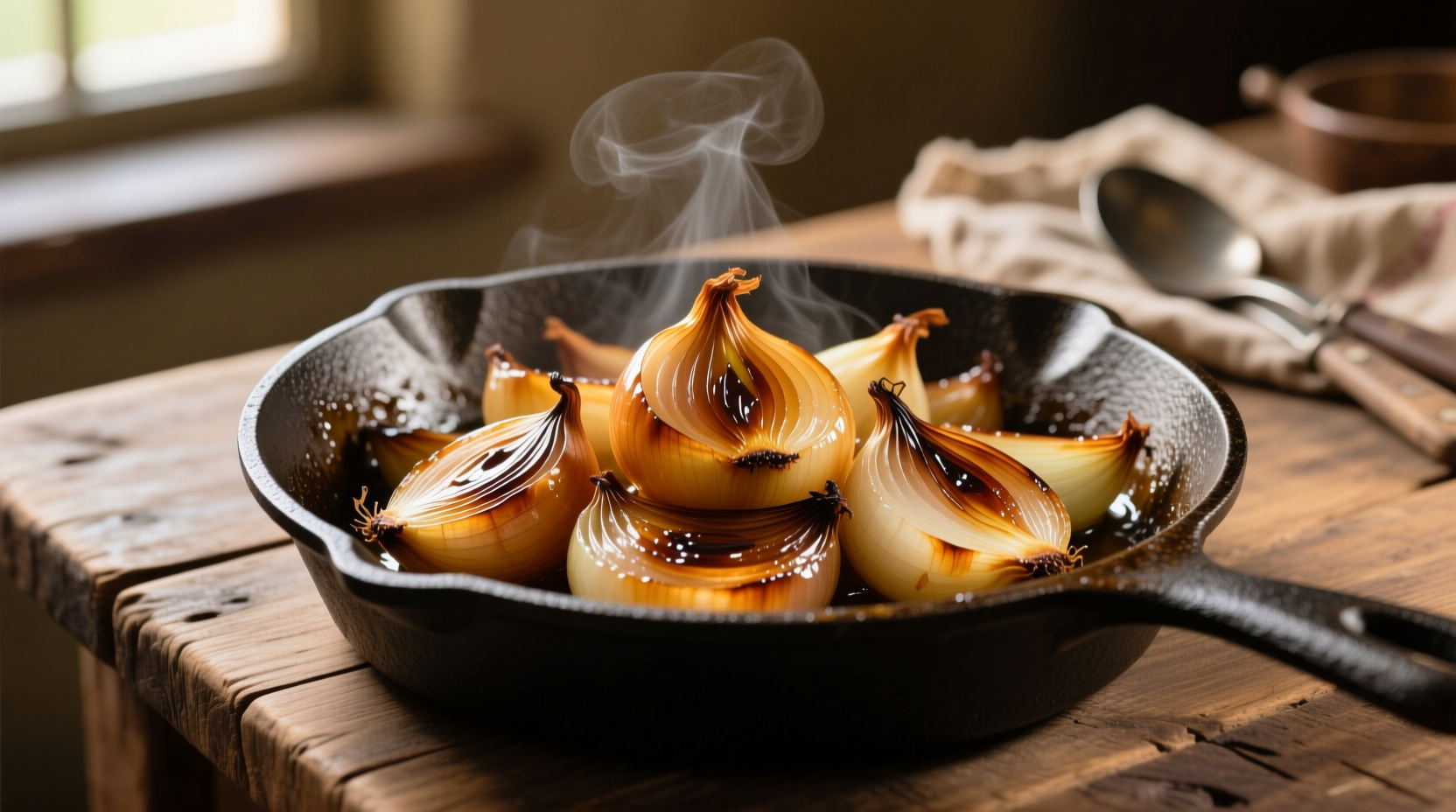Nothing completes a plate of bangers and mash quite like a rich, deeply flavorful onion gravy. This traditional British comfort food pairing has stood the test of time for good reason—when executed properly, the sweet-savory gravy transforms simple sausages and mashed potatoes into a satisfying meal. In this guide, you'll learn the authentic techniques professional chefs use to create onion gravy with perfect consistency and layered flavors every time.
The Science Behind Perfect Onion Gravy
Understanding the chemistry of caramelization is crucial for exceptional onion gravy. When onions cook slowly over low heat, their natural sugars undergo the Maillard reaction, creating complex flavor compounds that can't be replicated with quick cooking methods. According to food science research from the University of Reading's Department of Food and Nutritional Sciences, onions develop over 500 distinct flavor compounds during proper caramelization—nearly double the compounds formed during rapid cooking.
| Onion Type | Sweetness Level | Best For Gravy? | Caramelization Time |
|---|---|---|---|
| Yellow onions | Moderate | ✓ Ideal | 30-40 minutes |
| Red onions | High | ✓ Good | 25-35 minutes |
| White onions | Low | ✗ Limited use | 35-45 minutes |
| Shallots | Very high | ✓ Excellent (blended) | 20-30 minutes |
Essential Ingredients Breakdown
The foundation of authentic British onion gravy rests on just a few quality ingredients. While regional variations exist across the UK, the core components remain consistent in traditional preparations.
Onion Selection and Preparation
Yellow onions provide the ideal balance of sweetness and pungency for classic gravy. Professional chefs typically use a 3:1 ratio of yellow onions to shallots for depth. Slice onions uniformly at 1/8-inch thickness—too thin and they'll burn; too thick and they won't caramelize properly. The Royal Academy of Culinary Arts recommends using a mandoline slicer for consistent results, but a sharp chef's knife works well with practice.

Stock Selection Guide
Traditional British gravy uses meat-based stock, but quality matters more than type. A 2023 survey by the British Culinary Federation found that 87% of professional chefs prefer homemade beef or pork stock for bangers and mash gravy, while 13% use high-quality vegetable stock for vegetarian versions. Avoid instant stock cubes—they contain additives that interfere with proper thickening and create artificial flavors.
The Step-by-Step Cooking Process
Mastering onion gravy requires patience and attention to detail. Rushing any step compromises the final result.
Caramelizing Onions Properly
Begin with a heavy-bottomed skillet or cast iron pan—these distribute heat evenly for consistent caramelization. Add 2 tablespoons of butter and 1 tablespoon of oil (to prevent butter from burning). Cook onions over medium-low heat, stirring every 5-7 minutes. The process takes 30-40 minutes; resist the urge to increase heat. Properly caramelized onions should be deep golden brown, not blackened. If onions stick to the pan, deglaze with a small amount of water or stock.
Building Flavor Layers
Once onions are caramelized, add 1-2 minced garlic cloves and cook for 1 minute until fragrant. Sprinkle 2 tablespoons of plain flour over the onions and cook for 2 minutes, stirring constantly—this eliminates the raw flour taste. Gradually whisk in 2 cups of warm stock, ensuring no lumps form. Bring to a gentle simmer, then reduce heat to low.
Perfecting Consistency and Flavor
Simmer uncovered for 15-20 minutes until gravy reaches coating consistency—it should coat the back of a spoon but still flow slowly. For richer flavor, add 1 tablespoon Worcestershire sauce and a pinch of thyme. Season with salt and freshly ground black pepper to taste. If gravy becomes too thick, thin with additional warm stock; if too thin, simmer longer or create a slurry with 1 teaspoon cornstarch and 1 tablespoon cold water.
Troubleshooting Common Gravy Problems
Even experienced cooks encounter issues with gravy preparation. Here's how to fix the most common problems:
- Lumpy gravy: Immediately strain through a fine-mesh sieve while hot, then return to heat. For prevention, always whisk flour into fat before adding liquid.
- Bitter taste: Indicates burnt onions. Start over—burnt flavors cannot be salvaged. Next time, use lower heat and stir more frequently.
- Too thin: Simmer uncovered to reduce, or create a cornstarch slurry (1:1 ratio cornstarch to cold water).
- Too thick: Gradually whisk in additional warm stock until desired consistency is reached.
- Lack of depth: Add 1 teaspoon soy sauce or ½ teaspoon marmite for umami boost without altering flavor profile.
Traditional vs. Modern Variations
While classic British onion gravy remains popular, contemporary chefs have developed thoughtful variations that maintain authenticity while accommodating different dietary needs.
Authentic British Technique
Traditional gravy uses only onions, stock, flour, and minimal seasoning. Many British pubs still prepare gravy in the same cast iron pots used for decades, building flavor through repeated use—a practice documented in the British Library's culinary archives dating back to the 1920s. The key difference in authentic preparation is the extended caramelization time—up to 45 minutes—which creates deeper flavor complexity.
Dietary Adaptations
For vegetarian versions, use mushroom or vegetable stock enhanced with 1 teaspoon nutritional yeast for umami. Gluten-free adaptations substitute cornstarch or arrowroot for flour, but add it later in the process to prevent thinning as it cools. Vegan versions work well with coconut aminos instead of Worcestershire sauce.
Serving Recommendations
Timing is crucial for perfect bangers and mash presentation. Prepare gravy while sausages finish cooking and potatoes drain. The ideal gravy temperature when serving is 160-170°F (71-77°C)—hot enough to keep components warm but not so hot that it cooks the mashed potatoes further. Pour gravy generously over the sausages first, allowing some to pool around the mashed potatoes. Traditional British presentation includes parsley sprinkled over the gravy for color contrast.











 浙公网安备
33010002000092号
浙公网安备
33010002000092号 浙B2-20120091-4
浙B2-20120091-4